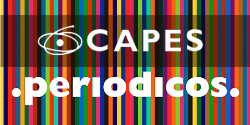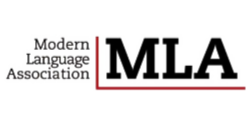CALL FOR PAPERS - DOSSIÊ "DE CANTERBURY A BLACK MIRROR – TRAJETÓRIAS E VERTENTES DA NARRATIVA FANTÁSTICA" ABR.-JUN. (2020)
As narrativas fantásticas sempre fizeram parte da expressão humana. Nos séculos XVIII e XIX, elas se tornam parte de reações artísticas à hegemonia do discurso cientificista e às suas formas de influenciar os processos criativos. O romantismo alemão, por exemplo, conforme assinala Italo Calvino, na introdução à coletânea Contos fantásticos do século XIX, reafirma a presença e a importância da fantasia e da imaginação para a arte. O conto fantástico surge como parte dessa resposta e tem como um de seus objetivos temáticos retratar o universo interior dos indivíduos com base em uma visão filosófica da existência. E. T. A Hoffman é o grande representante dessa linhagem e o seu Homem de areia traduz essa necessidade de mostrar equivalência de importância entre a vida interior e subjetiva e a objetividade em voga no campo intelectual de então. A Inglaterra mostra uma especial predileção pelos temas macabros, celebrizados nos romances góticos. De lá vem também a ghost story, modelo de histórias de fantasmas consagrado por Charles Dickens em Christmas Carols. A França contribui para a formação inicial do cânone fantástico com histórias como O diabo apaixonado, de Jacques Cazotte, ressignificando uma das figuras mais caras ao universo da ficção fantástica: o diabo, a partir de um relato em que a tensão entre possível e impossível se mantém com perfeito equilíbrio dramático. O fantástico estabelece-se aí de modo efetivo, segundo a percepção de Tzvetan Todorov, em Introdução à literatura fantástica, pois reúne uma série de efeitos capaz de suscitar no leitor a dúvida em relação à natureza da ação. Mas o estilo e os temas dessas narrativas aparecem em obras do mundo inteiro, constituindo corpora dinâmicos, variados e intrigantes cujos enredos surpreendem e renovam as estratégias de suspense, escapando ao universo do livro e chegando a séries como Black Mirror, cujos argumentos são construídos a partir de questões tecnológicas. A visão do fantástico escapa à percepção sobrenatural dos fenômenos e chega à esfera científica, aspectos já vislumbrados por Julio Verne e H. G. Wells, mas que, nas configurações contemporâneas, situam-se no âmbito da internet, dos games e da robótica. Os estudos literários acompanharam essa trajetória que tem, já na Idade Média, com as primeiras compilações das narrativas que compõem as Mil e uma noites, os contos do Decameron e os Contos de Canterbury, de Chaucer, além de outros muitos textos igualmente importantes surgidos nessa época, elementos fantásticos que reaparecerão posteriormente. Com a epistemologização dos estudos literários, no século XX, teorias surgiram para descrever, interpretar a partir de pressupostos metodológicos específicos, e analisar essas narrativas, conforme suas estratégias de composição, em que sopesem o real e o irreal. Contrapondo-se ao princípio dominante de uma visão racionalista da realidade, o fantástico recebe outras nomenclaturas e se configura como insólito, realismo mágico, ou realismo fantástico. Tendo estas últimas definições uma relação estreita com o modo latino-americano de conceber o real e exibi-lo em simulacros situados em posições limítrofes entre o absurdo e o inteiramente possível, em que vale como estratégia metaliterária, como faz Jorge Luís Borges, ou como as exposições simbólicas de Julio Cortázar e Murilo Rubião. Ou ainda como os labirintos poético-imaginários de Juan Rulfo ou de Gabriel Garcia Márquez. Seja qualquer uma dessas percepções, o que se entende como fantástico para esta chamada abriga, enquanto determinação genérica, todos esses outros nomes, ou, segundo assinala Irène Bessière, em Le récit fantastique, como um relato polivalente que resulta de muitos pressupostos metodológicos ou conceituais. Considerando todos esses aspectos, a Revista Entrelaces, do programa de Pós-Graduação da Universidade Federal do Ceará, convoca pesquisadores e interessados no tema a propor artigos que contemplem as mais diferentes abordagens de estudos de obras, em que se faça presente o discurso fantástico, para o dossiê, organizado por, Marisa Martins Gama-Khalil (UFU), Sayuri Grigório Matsuoka e Ana Marcia Siqueira (UFC), intitulado De Canterbury a Black Mirror – trajetórias e vertentes da narrativa fantástica. Assim, pertencem ao escopo deste número trabalhos cujos pontos de partida sejam autores, obras e suportes (literários ou não) especialmente interessados nas questões supracitadas.
***
From Canterbury to Black Mirror – trajectories and strands of the fantastic narrative.
The fantastic narratives always made part of the human expression. In the centuries XVIII and XIX, they become part of artistic reactions to the hegemony of the scientific speech and to its forms of influencing the creative processes. German romanticism,for example, according to Italo Calvino marks in the introduction to the collection Fantastic Stories of the century XIX, it reaffirms the presence and the importance of the fantasy and of the imagination for the art. The fantastic story appears like part of this answer and has like one of his thematic objectives shows the inner universe of the individuals on basis of a philosophical vision of the existence.
T. A. Hoffman is the great representative of this lineage and his Sandman translates this necessity of showing equivalence of importance between the inner and subjective life and the objectivity in rowing in the intellectual field of then. England shows a special preference for the macabre subjects recognized in the Gothic novels. From there comes also the ghost story, model of histories of ghosts consecrated by Charles Dickens in Christmas Carols. France contributes to the initial formation of the fantastic canon with histories like The devil in love, of Jacques Cazotte, re-signifying one of the most cherished figures to the universe of the fantastic fiction: the devil, from a report in which the tension between possible and impossible is maintained by a perfect dramatic balance.
The fantastic is established there in effective way, according to the perception of Tzvetan Todorov, in Introduction to the fantastic literature, because it joins a series of effects able to cause in the reader the doubt regarding the nature of the action. But the style and the subjects of these narratives appear in works of the whole world, constituting dynamic, varied and intriguing corpora whose plots surprise and renew the strategies of suspense, escaping to the universe of the book and reaching shows like Black Mirror, whose arguments are built from technological questions.
The vision of the fantastic avoids the supernatural perception of the phenomena and reaches the scientific sphere, aspects already glimpsed by Julio Verne and H. G. Wells, but that, in the contemporary configurations, are situated in the context of the Internet, games and of the robotics. The literary studies accompanied this trajectory that has, already in the Middle Ages, with the first compilations of the narratives that compose the Arabian nights, the stories of the Decameron and the Stories of Canterbury, of Chaucer, besides other many texts equally important appeared in this time, fantastic elements that will reappear subsequently. With the epistemologysing of the literary studies, in the century XX, theories appeared to describe, to construe and to analyse, from specific methodological presuppositions, these narratives, according to its strategies of composition, in which they counterweigh the real and the unreal.
Countered the dominant beginning of a rationalistic vision of the reality, the fantastic receives other nomenclatures and is shaped how unusually, magical realism, or fantastic realism. When a narrow relation has this last definitions with the Latin-American way to conceive the reality and to show it in imitations situated in bordering positions between the absurdity and the completely possible one, in which it is worth like metaliterary strategy, since it does Jorge Luís Borges, or like the symbolic formulations of Julio Cortázar and Murilo Rubião. Or still like the imaginary-poetic labyrinths of Juan Rulfo or Gabriel Garcia Márquez. Whatever the perception, which is understood how fantastic for this call it shelters, while generic determination, or, according other Irène Bessière, in Le récit fantastique, a polybrave report that results from many methodological or conceptual presuppositions.
Considering all these aspects, the Entrelaces Magazine, of the program of Postgraduation of the Federal University of the Ceará, it calls researchers and interested people in the subject to propose articles that contemplate the most different approaches of studies of works, in which the fantastic speech is made present, for the file organized by Ana Marcia Alves Siqueira (PPGLetras – UFC) and Sayuri Grigório Matsuoka, entitled From Canterbury to Black Mirror – trajectories and strands of the fantastic narrative. So, there belong to the aim of this number works which starting points are authors, works and supports (literary or not) specially interested in the foregoing questions.
***
Período de submissão: 05/11/2019 a 05/02/2020






